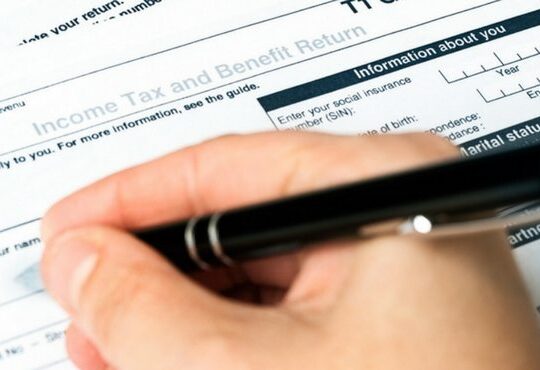Claiming Home Office Tax Expenses in Canada
TurboTax Canada
April 25, 2022 | 3 Min Read
Updated for tax year 2025

Many Canadians are or are becoming self-employed, and many choose to work out of their homes. Some businesses as well, choose to allow their employees to work remotely. Just as you needed an office as an employee when working at a business location, you’ll need one for your own business. The good news is the Canada Revenue Agency lets you claim your home office on your taxes; however, be sure to follow the rules, otherwise, your tax claim could be denied.
Trading in your cubicle at work for a home office means possible tax deductions.
Home Office Expenses for the Self-Employed
If you’re self-employed, you can claim your home office under two conditions:
1) The work space must be your principal place of business or used exclusively for the purpose of earning income from business.
2) The space must be used on a regular and continuous basis for meeting clients, customers or patients. It’s important to be realistic when claiming the size of your home office. One of the most common audit triggers is claiming inflated home office expenses.
Claiming Business Use of Home Expenses
If your home office qualifies for the tax deduction, you can claim a portion of your household expenses. For example, if your home office takes up 10 percent of the square footage of your home, you can claim 10 percent of utilities, insurance, property tax and mortgage interest.
You can also deduct expenses related to your home office. Expenses the CRA lets you deduct include pens, pencils, paper clips, stationery and stamps. Do not deduct calculators, chairs, desks and filing cabinets because these are capital expenses.
One often overlooked expense you can claim is cleaning services; if you have a cleaning lady tidy your home office, you can claim that as an expense, too.
Common Tax-Filing Mistakes for Home Office Expenses
Be careful when claiming home office expenses. You’ll be less likely to be audited by the CRA by following these simple rules.
“There are two common mistakes taxpayers make when claiming home office,” says Brendan McCann, a chartered professional accountant at Kudlow & McCann in Toronto.
“The first is when you claim the full mortgage payments in the year; the principal portion is not deductible. The second mistake is when you claim a percentage of repairs in the year that have nothing to do with the home office. For example, work you paid for on your kitchen sink. At the same time, if repairs are made exclusively to your home office, they can be claimed at 100 percent.”
Two other common tax filing mistakes include: – Rounding up your home office expenses: This may prompt the CRA to take a closer look at your tax return. It also could lead to closer scrutiny for your other expenses. – Failing to break down your home office expenses into different categories: The CRA may question your expenses if you’re showing big numbers in one category.
Visit CRA website for more information regarding other business expenses.
Home Offices Expenses for Employees
When you’re a salaried paid employee or commissioned paid employee, there are more restrictions for claiming your home office. You can only claim a home office expense when you’re required to pay for it by your employer; you can’t claim it if your employer reimburses you for it. Your employer must file the proper paperwork by certifying your obligation to use part of your home as an office on Form T2200, Declaration of Conditions of Employment. As well, you can’t make the same tax deductions available to the self-employed.
Whether you are an Employee or Self-Employed, TurboTax Online makes it easy to claim your home office expenses.
If you need more help, consider TurboTax Assist & Review, and get unlimited assistance and advice as you do your taxes, plus a final review before you file. Or, choose TurboTax Full Service and have one of our tax experts do you return from start to finish.
References & Resources
- Brendan McCann, chartered professional accountant; Kudlow & McCann CPA; Toronto, Ontario
File with confidence.
Related articles

© 1997-2024 Intuit, Inc. All rights reserved. Intuit, QuickBooks, QB, TurboTax, Profile, and Mint are registered trademarks of Intuit Inc. Terms and conditions, features, support, pricing, and service options subject to change without notice.
Copyright © Intuit Canada ULC, 2024. All rights reserved.
The views expressed on this site are intended to provide generalized financial information designed to educate a broad segment of the public; it does not give personalized tax, investment, legal, or other business and professional advice. Before taking any action, you should always seek the assistance of a professional who knows your particular situation for advice on taxes, your investments, the law, or any other business and professional matters that affect you and/or your business.









